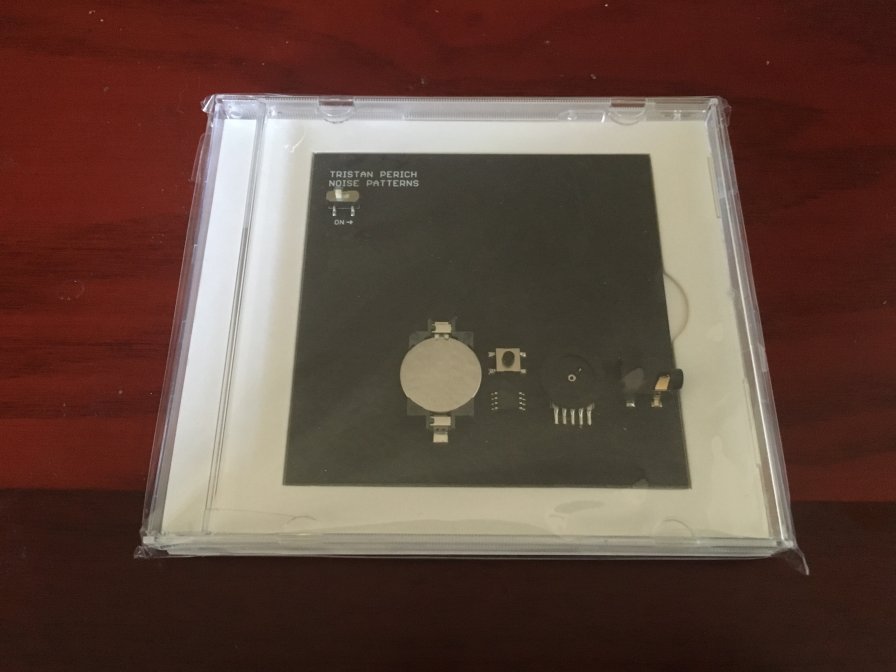“[A] characteristic to be identified as essential to the notion of the fetish is that of the fetish object’s irreducible materiality. […] Second, and equally important, is the theme of singularity and repetition. The fetish has an ordering power derived from its status as the fixation or inscription of a unique originating event that has brought together previously heterogenous elements into a novel identity. […] But the heterogenous components appropriated into an identity by a fetish are not only material elements; desires and beliefs and narrative structures establishing a practice are also fixed (or fixated) by the fetish, whose power is precisely the power to repeat its originating act of forging an identity of articulated relations between certain otherwise heterogenous things.”
– William Pietz, “The problem of the fetish, I” (1985)
“Time needs to be materialised in an object so it can be stockpiled as value. With the commodity out of the value-generating equation, value feeds back or compounds upon itself, bypassing both transmission in exchange or expenditure in use – value is ‘absolute’, not in exchange or use (or fetishised sociality).”
– Robin James, “Neoliberal Noise: Attali, Foucault & the Biopolitics of Uncool” (2015)
When Lou Reed committed 65+ minutes of guitar feedback to the RCA Records double LP Metal Machine Music, not only did he produce a radical conception of the musical possibilities of noise in the American underground, but he instigated a long withstanding fascination with object fetish in the subcultural noise tradition that followed. Extending his service to Warhol that began with the peelable banana sticker on the cover of 1967’s The Velvet Underground & Nico, Reed drew his consumer’s attention to the irreducible materiality of the vinyl record by issuing four more-or-less identical sides of music (at least in terms of large-scale formal perception). These four sides were only asymmetrically broken by the locked groove on the fourth side, repeating a loop until the listener intervened. The side lengths were respectively marked: 16:01, 16:01, 16:01, and “16:01 or ∞.” By simplifying the work’s structure and binding it to the physical characteristics and limitations of the record format, Reed deemphasized the weight of the sonic composition and created a work that incorporated and drew attention to its status as a consumer object.
While Warhol’s banana dared its beholder to irreversibly “peel slowly and see” — thus physically engaging with the work but blemishing its universality (its power of repetition) — Reed forced the consumer to confront Metal Machine Music as an object and nothing else. He states in its liner notes: “No one I know has listened to it all the way through including myself. It is not meant to be. Start any place you like.” Metal Machine Music did not present itself as a studio album (as a rock record might be marketed) or as a definitive documentation of a piece (as a “classical” or “art music” record might serve). Instead, it promised to be something more like a perverse tool or toy: “At the very least I made it so I had something to listen to. […] I love and adore it. I’m sorry, but not especially, if it turns you off.” Reed’s album was received very poorly.
If the noise underground teaches its audiences and participators anything worthwhile, it is a fine-tuned familiarity with the range of feelings between total alienation from and direct engagement with commodity fetish. It would be nearly impossible to survey the multitude of ways that throngs of underground noise makers and conceptualists have induced fetish — limited editions, obsolete mediums (mini CDs, cassettes, etc.), handmade casings, vast collectable discographies, controversial (i.e., dangerous) content, etc. — but it is worth mentioning a few participators.
In 1985, French conceptual artist and turntablist Christian Marclay released Record Without a Cover, which was to be produced, shipped, stocked, and sold as its title suggests: without any protective packaging. By inviting dust and scratches to accompany recorded music that was also partially recordings of dust and scratches on records, Marclay disallowed his listener to find that Record Without a Cover might be able to transcend an immediate physical engagement with the record itself.
A related gesture is found through Los Angeles noise-conceptualist John Wiese’s 7-inch Roulette (2015) (filed under his project/band Sissy Spacek). Side A of Roulette “has four start points with concentrically cut grooves, one for each track.” Each track is a brief, barely distinguishable 10-20 second noise-grind blast. Roulette presents a game that challenges chronology, listenership, participation, completeness, and repetition, as a listener must restart the album a minimum of four times (and very likely more) just to be sure they have heard the album’s four tracks.
It is also worth noting Japanese improvisor Sachiko M and her album Bar さちこ (Bar Sachiko), on which she confronts and presents extreme minimality as manifested through a marriage of noise music and product production. The Bar さちこ CD holds an hour-long improvisation that consists of a single unchanging sine tone (approximately 2960 Hz) for exactly 30 minutes until a second sine tone an octave lower (approximately 1480 Hz) enters and remains for another 30 minutes. The result is a balanced and simple product that maximizes CD space while minimizing content and performance (both human and machine). Symmetry, purity, and clean execution make Sachiko’s “bar” a shared unit of experience: structurally binary, but — like a bar, brick, or measure — one.


I’m afraid to touch it. Afraid that I might blemish — smudge, scratch, or chip — it. Maybe even afraid to listen. Any interaction with this thing could damage it or, at least, my relationship with it. But I’ve known all along that the music is likely beside the point, so I plug in.
It begins with full force the moment off becomes on. It’s all binary like that, 1-Bit. All noise, pulses emerge, evolve, and fall back (to me, surprisingly sporadically and actively for the reduced concept and design of the work). Best loud, panned repetitions play tricks. Harsh crackles sit in my sinuses, emerging from my ears or resonating with cartilage and bone in my nose. The sounds are good — great, maybe — but beside the point.

I text Andy, sending him pictures. He says the small MCU on the circuit board can’t process much, that 1-Bit is about all it would be able to take. He figures “[Perich] is a proper minimalist: minimal material, minimal cost, minimal instruction set (the chip only understands ~250 unique instructions), minimal compiled program, [minimal] audience (intended for single listener with stereo headphones), [minimal] design, so on.” The press release agrees: “Noise Patterns is not released as a CD or record. Noise Patterns comes as a matte-black circuit board with a design that is hardcore minimalist: only a battery, on/off switch, microchip, volume knob, fast-forward button, and headphone jack sit exposed on its stark surface. Plug in and switch it on to listen to Perich’s music unfold with sublime, physical presence.” The effect of the arguably unlikely (or at least refined, if well-explored) combination of minimalist design, naked micro-electronics, and harsh noise that Perich produces satisfies fetish-discourser William Pietz’s remarks that,
“the idea of an enduring effect of aesthetic unity produced by the singular chance encounter of heterogenous elements (the umbrella and the sewing machine) is fundamental to modernist art. […] Nineteenth-century economic, sociological, anthropological, and psychological discourses about the fetish constantly stress the idea of certain material objects as the loci of fixed structures of the inscription, displacement, reversal, and overestimation of value.”
If Noise Patterns seems novel or important — and if this importance contains no element of self-aware systemic or institutional critique — it serves as a hallmark of value distribution in contemporary music and conceptual art.
Like Reed’s manic manipulation of his guitar signal on Metal Machine Music, Perich processes his single noise oscillator to incomprehensible pulsating structures. Echoing Reed, Perich punctuates his statement with a lingering, “infinite” wash of noise. Like Marclay, Perich pulls at the tension of cherishable objects and additionally draws his medium in as a performer, a direct, primary source of noise. Like Wiese’s, Perich’s album requires ritual, attention, and participation of the listener.
Unlike Sachiko M’s Bar さちこ, however, the music on Noise Patterns overwhelms its object, eating it up with highly compositional material. Perich’s musical identity sits behind the MCU with every pattern. Where Sachiko M dissolves into the glossy surface of the CD — allowing disbelief that she was ever really there, holding a key on her sampler the entire time — Perich asserts his self: an individual, a voice.
In “Neoliberal Noise: Attali, Foucault & the Biopolitics of Uncool,” Robin James summarizes:
The neoliberal ‘self is reconceived as a stock of capital’ (Horning 2013), as, in other words, ‘the accumulation of skills and qualities’ understood and treated ‘as forms of capital investment’ (Dilts 2011: 139,137). This capital manifests qualitatively, as what Rob Horning calls ‘cool’ (2013) and quantitatively, as what Attali calls use-time. Though Horning doesn’t explicitly use the term ‘use-time’ in his account of cool, he describes something quite like it: ‘we must view it [cool] … as something countable in media-exposure minutes … [or] standardized units that our significance to society could be measured in’ (Horning 2013). For Horning, social media (Klout scores, follower or friend counts, etc.) measures the intensity of ‘the cool one has accumulated’ (2013) — they track how much use-time other people have invested in one’s media profile(s), the velocity of sharing, and so on. They chart our human capital, our ‘“value” as “cool”’(Horning 2012).”
Noise Patterns is cool. It has a hook and an edge. It accomplishes its ideal and does it well. With it, Perich delivers a vaguely familiar, uncritical parallel to the fetish problematic of the art world for the music world instead. Devouring and processing noise (a critical and antagonistic continuum) into a stockpile object, Perich manipulates and harvests value. It is satisfying, impressive, and extreme. It has a $30.00 price tag and a guaranteed collectible status. I own one, and I was to use it to consider its worth and then, through TMT, represent it with a rating on a five-point scale. I am a cog in the biopolitical machine of cool. Value feeds back, compounds here. Reluctantly, I abide. One, two, three, four, five.
More about: Tristan Perich




